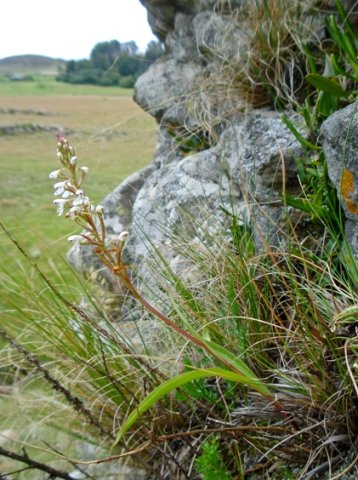Disa saxicola

Author: Ivan Lätti
Photographer: Judd Kirkel Welwitch
Disa saxicola, sometimes commonly referred to as the lithophytic disa or the rock disa, is a slender perennial growing to 40 cm in height.
The distribution lies in the east of southern Africa, from KwaZulu-Natal, Mpumalanga and Limpopo to Tanzania and Malawi. The photo was taken in the Verloren Vallei Reserve of Mpumalanga during January.
The plant is found on rocks among moss, in rock crevices or on ledges, often in partial shade. The plant may trail, depending on its rocky perch. It is found at altitudes ranging between 1600 m and 2400 m. The specific name, saxicola, divulges something about the plant’s position in nature, mostly living on rocks: saxum means rock in Latin, colo to inhabit (one of the word’s meanings). The habitat population is deemed of least concern early in the twenty first century (Pooley, 1998; iNaturalist; http://orchids.wikia.com; http://redlist.sanbi.org).

